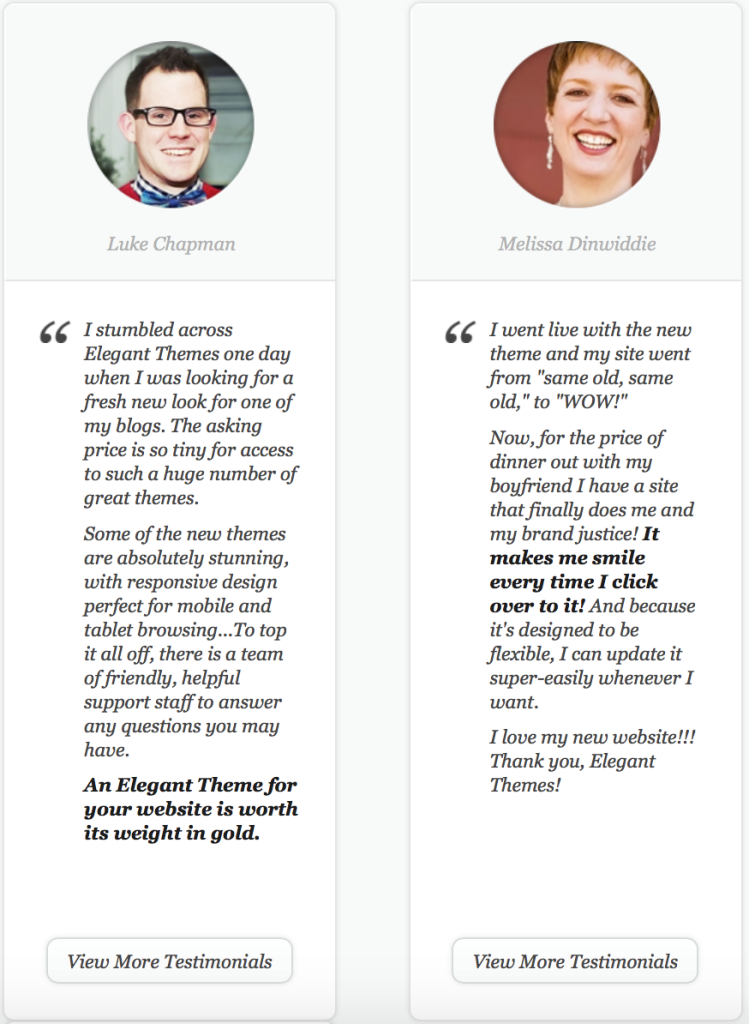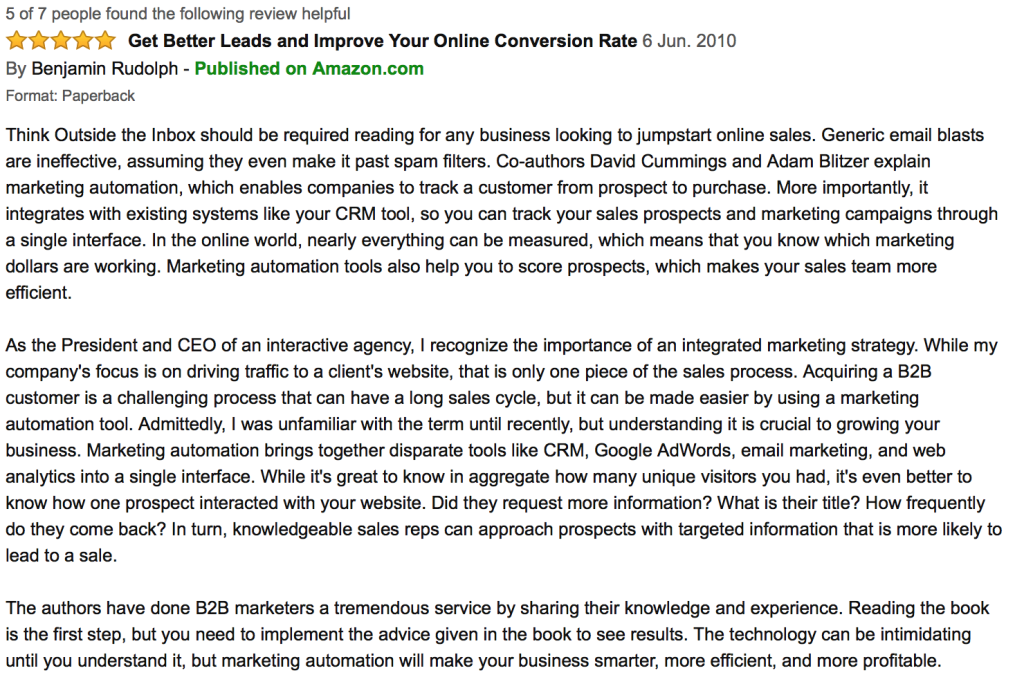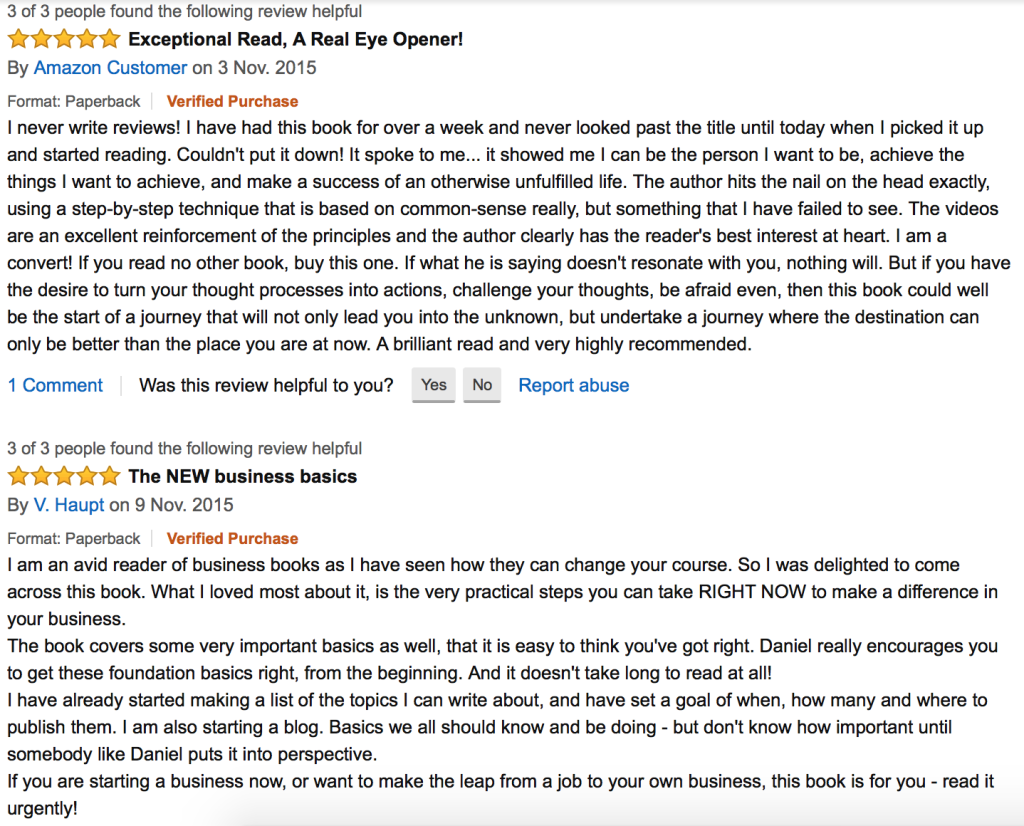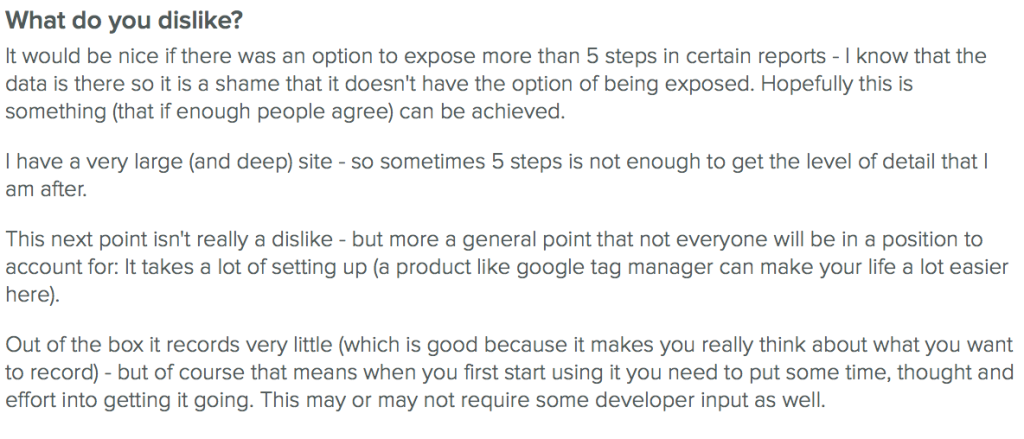What makes great copy?
It’s the million dollar question.
Your copy’s at the heart of nearly all your marketing efforts. From sales emails to blog posts and video scripts to social media updates. If your copy doesn’t hit the mark your campaign will fall far short of your goal.
The web is full of articles on the topic of creating better copy. We’re told to focus on the benefits, make it scannable, use power words and know what our audience wants.
All of these little nuggets of wisdom definitely help, but they’re something of a long way round. They require a lot of thought and analysis. They require hours of sitting at a desk and attempting to discern the deeper meaning of your product and how it appeals to your audience.
Fortunately for us all, there’s a little shortcut copywriters have been using for a long, long time.
Theft.
Yup. I said it. Why torture yourself in a vain attempt at discovering a marketing epiphany when you can simply “borrow” the best messaging right from the mouths of your primary prospects?
Conversions aren’t born of witty slogans or clever copy, they’re the result of desire and trust. If you can convince your prospects that you’re one of them and know their pain, can build their desire for your product and establish yourself as a trustworthy solution provider, the battle is all but won. What better way to show them you understand their problems than by using their own words?
“But surely stealing from your audience is bad,” you say. And yes, I’d be inclined to agree if we were talking about something of actual value, but we’re not. We’re talking about repurposing their language so that your brand better aligns with your prospect’s ideals, needs and opinions.
Is it Really Better to Steal Your Copy?
Yes, yes it is.
You might know your product better than anyone alive, but that doesn’t mean you know exactly which parts are the most desirable to your audience.
Too often I speak to marketing managers who are full of their own pomp. They want to highlight the awards they’ve won or explain the complicated features that took the longest time to implement. These are the elements that are important to them as a part of the business.
But your prospects don’t really care about the awards you’ve won. Sure they add a little credibility to your claims, but your awards shelf has nothing to do with the life and problems of your key demographic. Their primary interest is in making their own lives easier.
Swiping your copy directly from your prospects guarantees that the focus is where it should be, on your audience’s needs. But it doesn’t end there, utilizing your audience’s words in your copy also helps with the following:
1 – Speaking in the Same Terms Builds Trust
This study by Northwestern University identified a correlation between linguistic mimicry and trust. Using the same language as your prospects builds a better relationship with them. You’re seen as a business in tune with their needs and who fully understands the industry and its problems.
2 – Cuts Down on Useless Jargon
Clarity should always be a top priority when writing. As a service provider or product developer it’s easy to get caught up in the technical details. However, your prospects won’t have the depth of understanding you do. Cutting jargon can be difficult as a member of the business as you believe it all to be understandable. Copying from your prospects ensures this won’t be a problem.
3 – It Saves you Time
Writing good copy isn’t easy. Trying to find the key points and compelling factors can take forever. Copying from your prospects cuts down on the time and hardship associated with the “creative” side of copywriting and delivers an impactful message in record time.
So copying from your prospects offers a variety of benefits. The question then, is where to find the best quality and most useful content to copy.
Start with Testimonials
Testimonials are amazing for a number of reasons. More often than not we focus on their ability to build trust and how we can leverage that trust to increase conversions.
However, testimonials are literally a list of what your happy customers have found valuable in your service. Valuable information when you’re trying to figure out how to appeal to others in that demographic.
Take the home page for Elegant Themes as an example. Just below the fold you’ll find a couple of testimonials.
There’s quite a bit of information in each testimonial and, if I’m being honest, a lot of it isn’t useful. you’ve got to know what to look for and, generally speaking, you’re looking for two things.
1 – The solutions your customers find important
2 – The words and language they use to describe these solutions
Take the left most testimonial for example. Mr Chapman’s key points are:
Value
“The asking price is so tiny for access to such a huge number of great themes”
Aesthetics/Design
“Some of the new themes are absolutely stunning”
Mobile Optimization
“with responsive design perfect for mobile and tablet browsing”
Customer Service
“To top it all off there is a team of friendly, helpful support staff to answer any questions you may have”
This is what you need to do with your testimonials. Break them down, pull out the key benefits and understand how prospects word their explanations.
But remember, not all testimonials are created equal. Those crappy one word or single sentence explanations aren’t going to cut it. You need someone who’s gone into detail and has taken the time to really explain what it is about your service that appeals to them.
When you find the good ones, be sure to bookmark them. We’ll be coming back to them later.
Review Mining
Review mining is the act of pouring through reviews of either your service or that of a close competitor to gain a better understanding of what your prospects really want.
Thanks to impartial review sites including Amazon, Yelp, Trip Advisor etc, you’ve got access to the collective thoughts of customers from all walks of life.
Your first step should always be to look at the various reviews and testimonials on both your site and that of your competitors. Once that initial stage is done you want to take advantage of the many impartial review sites out there. Here are a few examples of what you might want to look for:
- Reviews of related books and materials on Amazon
- Service / product reviews on sites like G2Crowd
- Glean information on the business from Yelp
These are just a few examples. The sites you’ll need will depend on the product and the kind of industry you’re in.
Let’s imagine you’re launching a new marketing automation service. You’ve researched your competitors but need a little further insight into the mind of your ideal prospect. You search Amazon for books that your target market would read and find the below review.
There’s a wealth of information in there which highlights the struggles marketers face and the primary reasons why automation is necessary. It’s a veritable goldmine of information and, as it comes from your target market, gives you an idea of the language that best resonates with them.
Basically, get as much information as you can on the way your ideal prospects view the existing and emerging services. Find out what they like, and what they think is missing.
What To Do with the information
At this point you should have a few sources of good testimonials and reviews from your ideal prospects.
Your job now is to sift through all that text in an effort to discover a few common trends.
Tone of Voice
First up you want to discover if there’s a tone of voice adopted across the spectrum. Are many of the reviews and testimonials written in a boring business or overly professional fashion? Are they instead very jovial and light hearted? Is it seriously compassion laden and emotive?
What sort of tone would you give the below reviews from a book on entrepreneurship?
If you ask me the tone of the above reviews are unsurprisingly motivational, upbeat and positive. It stands to reason, a dull, boring tone focused on features and details likely wouldn’t do well with an ambitious crowd of startup business folk who want to build something of their own.
Try to figure out the general tone your key prospects adopt when writing about the services in your area. This is the tone of voice you should begin your testing with to see if it really does resonate better than your current control.
Patterns
Next you want to look for recurring patterns. These patterns won’t so much dictate the tone of your copy, but are more specific and likely to influence individual copy elements such as headlines, subheads, bullet points etc.
You want to keep an eye out for:
1- Repeated phrases
Are certain phrases repeated? If so, are they important to the industry and would they make compelling copy elements?
2 – What are the Problems
No product has 100% positive reviews. There will always be some negative nancy voicing their opinion, which is great. It can sometimes be hard to discern the problems people face when they’re continually harping on about a product’s positive points. Negative reviews though are a doorway into the problems people face.
Take the below review from the same entrepreneurial book cited above as an example.
If you were creating a competing product you could focus on its ability to get right to the point. In a wider sense you could assume that your prospect’s have a lack of time. You could use this knowledge to highlight your product’s ability to save time or increase productivity.
3 – The Solutions People Want
Here’s the “what do you dislike’ section of a review on KISSmetrics from G2Crowd.
Right in the middle of the review the user lists a solution currently missing from the service. If you worked for KISSMetrics it’s a point that could help define future product development or even copy to help explain why that solution is no longer needed. Competitors can use the missing solution as focal point for their own copy, providing it’s a solution they provide of course.
You shouldn’t be recording every single potentially useful bit of information from these reviews. One person’s opinion does not represent your wider audience.
You need to go through as many reviews and testimonials as possible to find the most repeated phrases, problems and solutions. The more often the occurrence of a phrase or problem, the more likely it is that it will resonate with your whole audience.
Be sure you don’t fall prey to your own ideas here. You’ll come across some reviews which represent your own beliefs and it will be tempting to include them. But if these corroborating views are few in number, they’re useless to you.
Don’t be Afraid to Commandeer Your Prospects’ Words
You are not your prospect. That’s what this all comes down to.
You may share many attributes with them, but you’re not them. To think that you know exactly what they want from your product is sheer arrogance. Arrogance which will sink your conversion efforts and leave you making a loss.
Don’t work yourself so hard. Instead, let your prospects do your work for you by:
- Discovering what they have to say about your/competitor’s product or industry
- Identifying key phrases and points that resonate with them as a whole
- Utilizing those words to form a better bond with your prospects and increase sales
It might feel wrong to start stealing your key messages from those you’re selling to. But it’s a method copywriters have been using for a long time now.
It’s easy and proven to bring better results than the ideas man who sits behind his desk dreaming up the ‘perfect message’. Save yourself the hassle and let your prospects do the work for you.












